June 27, 2022 | 17:00 (GMT+7)
Following in the footsteps of those who convert seabed into forest
PANO - Nha Trang Bay in the southern central coastal province of Khanh Hoa has the world's most diverse coral reef ecosystem with more than 350 species, accounting for more than 40% of the world's coral species, attracting many domestic and international tourists.
Likened to tropical forests in the ocean, coral reefs are home to 25% of marine species. However, in recent years, the biodiversity and the number of coral populations in Nha Trang Bay have been rapidly declining due to objective factors and human activities.
Following the scientists from the Vietnam-Russia Tropical Center’s coastal branch, reporter Tuan Huy of the People's Army Newspaper has had a chance to eye-witness hardships facing Vietnamese and Russian scientists in searching, numbering, sampling and preserving coral and marine species in Nha Trang Bay.
The People’s Army Newspaper would like to introduce several photos of Vietnamese and Russian scientists’ activities in Nha Trang Bay with an attempt to covert the seabed into forest.
    |
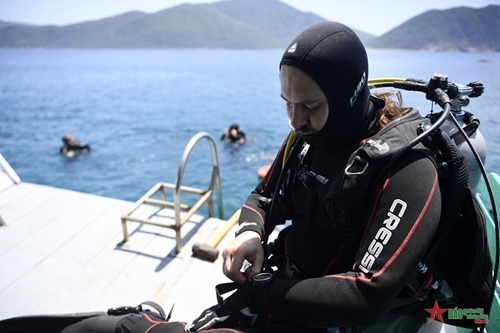 |
|
Underwater diving is a dangerous job requiring careful preparation. |
    |
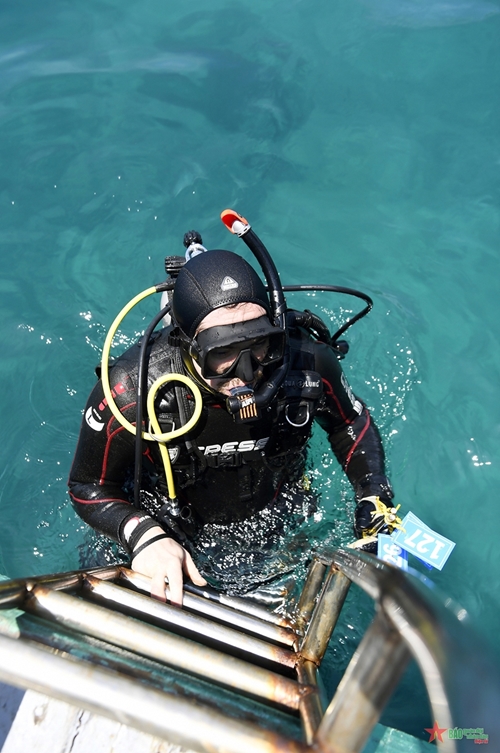 |
|
A scientist carries numbered stakes to locate coral trees. |
    |
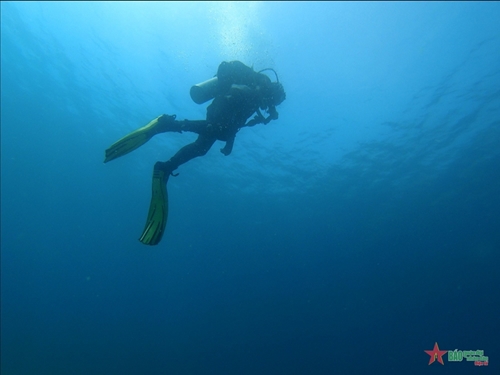 |
|
Diving for many hours, searching for every square meter of the seabed requires divers’ perseverance, mental stability and good fitness. |
    |
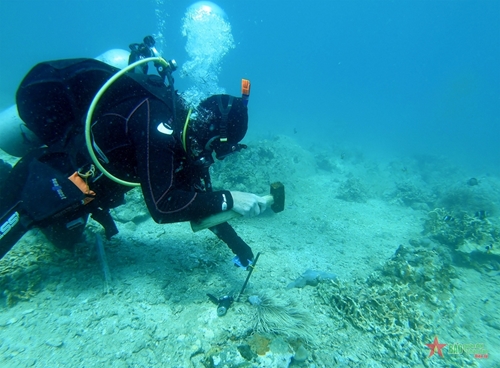 |
|
Whenever a coral or sea anemone population is found, scientists will plant a stake, number, take photos and record the location on the positioning (navigation) system. |
    |
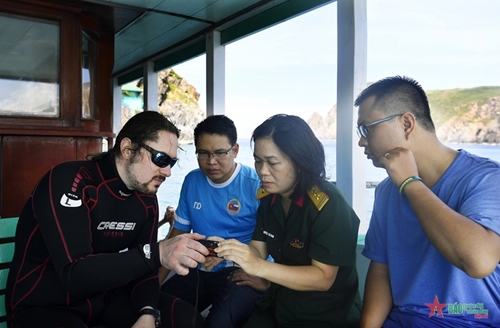 |
|
Vietnamese and Russian scientists discuss the location of organisms. |
    |
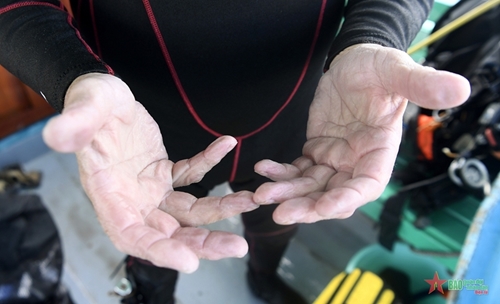 |
|
The hands of a scientist after hours of immersion in sea water |
Translated by Mai Huong